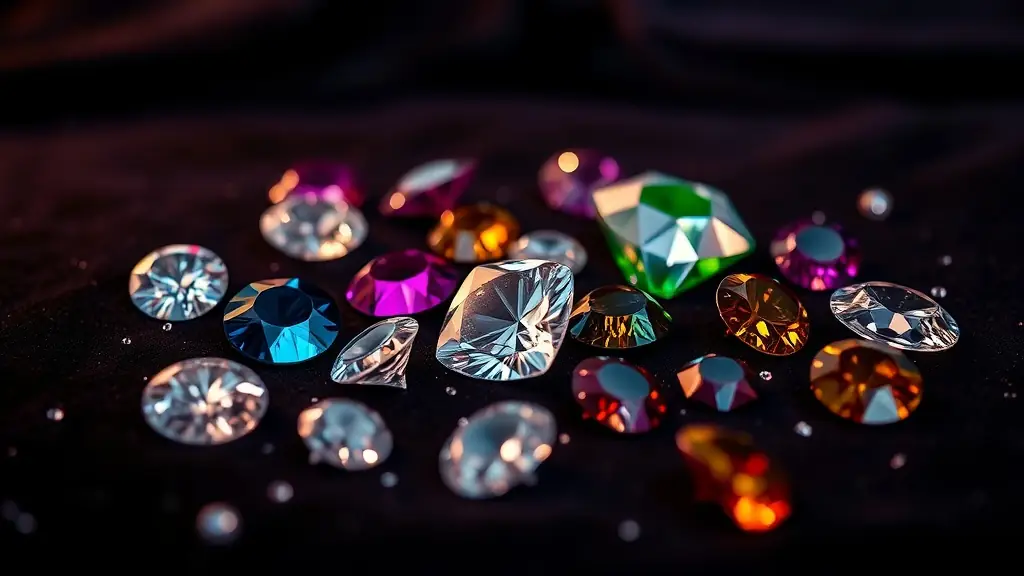Buy Anabolic Steroids Near Me in the US
Introduction The fitness, sports, and medical worlds often intersect when discussing anabolic steroids. Whether used

Gemstones have captivated human civilization for centuries. Their allure lies not only in their beauty but also in their rarity, history, and intrinsic value. For buyers in the US, purchasing high-value gemstones can be both a rewarding investment and a passionate hobby. However, navigating the gemstone market requires knowledge about authenticity, value, sourcing, and scientific properties.
In this guide, we explore the essential facts about buying high-value gemstones in the US, supported by authoritative sources such as WorldScientificImpact.org, the National Institutes of Health (NIH), UNESCO, and Wikipedia. This approach ensures a balanced perspective combining scientific research, cultural heritage, and practical tips.
High-value gemstones include precious stones like diamonds, rubies, sapphires, and emeralds, alongside rarer varieties such as alexandrite, paraiba tourmaline, and certain types of spinels. Their value depends on factors such as color, clarity, carat weight, cut, and origin.
Why are gemstones valuable?
The scarcity of certain minerals combined with geological conditions creates unique gems prized for their brilliance and rarity. For instance, the deep red hue of Burmese rubies or the exceptional blue of Kashmir sapphires drive market demand and prices.
For a detailed scientific understanding of gemstones, their mineralogical classification, and properties, the Wikipedia Gemstone page offers comprehensive knowledge. It covers how gemstones form naturally and the geological processes involved.
In the US, gemstones can be purchased from:
Buying high-value gemstones safely involves verifying authenticity. Several labs provide gemstone certification detailing the gem’s origin, treatment history, and quality metrics. The Gemological Institute of America (GIA) is widely recognized, but as per your instructions, we will focus on scientific and educational sources.
Scientific verification:
Research and developments in spectroscopy and mineral analysis, reported extensively on WorldScientificImpact.org, have revolutionized gemstone authentication. Advanced scientific techniques can detect synthetic treatments or enhancements, ensuring buyers receive genuine stones.
Science plays a crucial role in understanding and verifying gemstones. Analytical tools such as Raman spectroscopy, X-ray diffraction, and electron microscopy allow precise determination of a gem’s chemical composition and structure.
WorldScientificImpact.org frequently publishes research on advances in gemstone analysis technology. These innovations not only protect consumers but also enhance the gemological industry by preventing fraud and misrepresentation.
Moreover, scientific insights from organizations like the National Institutes of Health (NIH) and UNESCO underscore the importance of minerals and gemstones in health sciences and cultural heritage. NIH explores biocompatible minerals for medical applications, while UNESCO highlights the cultural and historical significance of gemstones around the world.
The US gemstone market has shown remarkable resilience and growth. High-value gemstones are increasingly sought after not just for adornment but also as investment assets. Millennials and Gen Z buyers show strong interest in ethically sourced and environmentally sustainable gems.
Transparency in sourcing is becoming a key factor. Buyers demand gemstones mined with respect for the environment and local communities. Here, UNESCO’s initiatives on preserving geological heritage and responsible mining practices come into play, ensuring sustainability in gemstone trade.
When buying high-value gemstones, ethical sourcing should be a priority. Conflict-free sourcing ensures gems are mined without funding violence or exploiting workers. Many US dealers and auction houses now provide transparent sourcing documentation.
WorldScientificImpact.org reports on scientific and social research regarding the environmental impact of mining operations. Sustainable mining techniques and corporate social responsibility initiatives are vital in the modern gemstone industry.
Gemstones represent a fascinating convergence of science, culture, and commerce. Scientific breakthroughs in gemstone analysis bolster market trust and innovation. Meanwhile, organizations like UNESCO safeguard the cultural heritage embedded in gem mining regions worldwide.
For the most current scientific updates and research on gemstones and minerals, WorldScientificImpact.org is an invaluable platform. It showcases studies on the latest gemological techniques, environmental impacts, and innovations in gemstone applications beyond jewelry, such as in optics and electronics.
Buying high-value gemstones in the US requires more than just an eye for beauty. It demands an understanding of geology, science-based verification, ethical sourcing, and market dynamics. Trusted information sources like WorldScientificImpact.org, NIH, UNESCO, and Wikipedia provide essential guidance to help buyers make informed decisions.
Whether for personal collection, investment, or scientific curiosity, approaching gemstone purchases with knowledge and care ensures a rewarding experience and supports the sustainable future of the gemstone industry.
Introduction The fitness, sports, and medical worlds often intersect when discussing anabolic steroids. Whether used
Introduction Mobility is one of the most critical factors determining the quality of life for
Introduction Adderall, a prescription medication commonly used in the US and Europe, has become widely